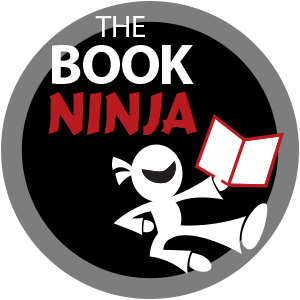You want to be published? Think it takes thousands of dollars? Read on for a simple solution!
If you feel like you have no money to publish, I’d recommend publishing as a Kindle book to start. Nowadays 95% of all fiction is read on the Kindle, so it’s especially worth it for fiction to start there, make some money, then invest in print later. Print is still cool to have, and readers will eventually ask for it, but starting with Kindle is much less costly.
Also keep in mind that you may be able to get a traditional contract as well. (If you’re serious about traditional publishing, get the book The Writer’s Market 2012 from your local library or click the title to get it on Amazon.)
Here are 5 simple steps to publish your book:
1. Edit, Edit & Re-Edit
Your writing is probably already good, and everyone could use an editor. First, edit it yourself. Read it aloud to yourself or someone else, and note that wherever your voice stumbles is a good place to improve the writing. Second, take the advice of others who critique your work. Getting people to read your book as you write it is like getting a bunch of proof readers for free. Join a local critique group or start one on Meetup.com. Once you’ve done those things, consider a professional copy editor. Talk with your local school’s English teacher or local college to find someone in the English department (an English graduate student or major is perfect, too) who would be willing to inexpensively edit your book. You may even be able to find someone to do it for free. If your book is a professional business book and a reflection of your credibility of an expert, hire a professional copy editor. Your reputation may depend on it!
2. Format Your Book for Kindle
The number one complaint about Kindle books is that they’re difficult to read. This results in horrible credibility-destroying reviews that are hard to remove from one of the biggest sites on the web. So make sure you take the step to make your eBook easy to read on Kindle. I recommend Scrivener. If your book includes graphics, bullets and other more complex formatting, get a professional eBook programmer to ensure it reads nice and clean.
3. Design Your Cover
If you’re an artist, so you can probably design your own cover. Remember to keep these things in mind: make the title big enough to be clearly read when it’s a tiny thumbnail image in an Amazon search, make sure any pictures you use are clearly related to your book’s title and content, and use eye-catching colors and clean, clear fonts to engage a searcher’s eye. You want your cover image to stand out among traditionally published books, not fall into the background and get easily overlooked, and most of all you don’t want your cover to scream, “I’m self-published!”
3. Set Up Your eBook
Create your free Direct to Kindle account on Amazon.com and set up your eBook. This is also a fairly simple process. Go to kdp.amazon.com and sign up for an account, then follow the steps to set up your eBook, using the file you created from Step 2 above. Keep in mind if you skip Step 2, your eBook’s format may not read clean and you’ll end up with credibility damaging negative reviews on Amazon that will hurt your reputation before you’ve even begun to make progress as a published author. I can’t stress enough how important Step 2 is to do. When you set up your eBook, keep it between $2.99 to $9.99 to get the most in royalties. For most fiction I recommend around a $5 price point. For non-fiction business books, $4.99 to $9.99 depending on the size is a good price for an eBook. If your eBook is a lead-generating tool like a transcribed interview or a shorter report, sell it for 99 cents.
4. Promote!
If you have an established business, you already have a good head start with promoting your book anywhere you promote your business. Make a fan page for yourself as an author on Facebook, start Tweeting on Twitter, use Facebook and LinkedIn groups to connect with your target audience, and run with it. Don’t be shy – it’s OK to toot your own horn as a published author. Even traditional publishers understand that authors are the ones who best sell books, so go for it! And check out the book 1,001 Ways to Market Your Books from my friend John Kremer for a ton of great promotional ideas.
5. Write Your Next Book
Steps 4 and 5 are simultaneous. You should never stop promoting your existing books, and the more you write, the more sales are driven to your previous book(s). I’ve noticed this with my own books. I tend to sell twice as many of my first “21 Ways” book than my second. And I steadily sell older books I’ve written as well. Every time I publish a new book, I see a slight surge in sales for the older books. And a bonus tip here – make sure you advertise your older book(s) in each new book you publish! That helps readers become aware of previous books you’ve written and increases your overall sales.
Completing Steps 1 through 5 will set you well on the path to being a published author.

